Featured Articles
TWO SECONDS FROM GLORY, TWO SECONDS TO HEARTBREAK
Two seconds.
How long is that? Maybe long enough for 1½ beats of the average human being’s heart, or for a long inbounds pass to Duke All-America Christian Laettner, who made one of the most memorable buzzer-beating shots in college basketball history.
It is but a tiny snippet of time, a few blinks of the eye, a sneeze, a hiccup. But a snippet is enough to make the difference between a gold medal and a silver in the Olympics, or between victory and defeat in one of the most controversial boxing matches ever.
The Ring magazine very well might have selected the epic first clash between undefeated super lightweight champions Julio Cesar Chavez and Meldrick Taylor its Fight of the Year for 1990 even had that bout ended two seconds sooner. But those two seconds had yet to tick off, and the nature of the bout’s conclusion – with referee Richard Steele waving his arms and awarding Chavez, who was too far behind on the scorecards to win on points, even with the benefit of his 12th-round knockdown of Taylor – has stamped it as a matter of perennial debate. Should Steele, who had to be aware of the flashing red light in his field of vision as he administered a standing-eight count to a badly shaken Taylor, signifying that the fight was in its final few seconds, have allowed the Philadelphian the benefit of that sneeze or hiccup? Or did Steele, who was inducted into the International Boxing Hall of Fame in 2014, make the right call, one rendered on the side of caution?
So incredible was the unification fight of two 140-pound kings at the height of their powers – the 23-year-old Taylor, the IBF titlist, went in at 24-0-1, with 13 knockouts, to 67-0 with 49 wins inside the distance for Chavez, 27, the WBC ruler and Mexican national hero — that Chavez-Taylor got that Fight of the Year nod over a little scrap in Tokyo five weeks earlier, in which a 42-to-1 longshot named Buster Douglas knocked out heavyweight champion Mike Tyson, the most fearsome visitor to the Land of the Rising Sun since Godzilla.
I was at ringside for both fights, and although Tyson-Douglas was undoubtedly the bigger event from a historical perspective, given the aura of invincibility that clung to Tyson that afternoon (because of the 14-hour time difference between the East Coast and Japan, the bout began Sunday afternoon in Japan, Saturday night in the U.S.), but Chavez-Taylor, to me, was the more compelling scrap. It was, in every sense of the word, worthy of all the hype, which might or might not be the case when welterweight champs Floyd Mayweather Jr. and Manny Pacquiao swap punches in an even-more-anticipated unification pairing on May 2 at the MGM Grand in Las Vegas.
It was my opinion then, and now, that Taylor deserved the victory he had earned in the first 35 minutes, 58 seconds of a war for the ages. Chavez knew there were only a few seconds remaining until the final bell, and he was right behind Steele, poised to charge forward and get in one last, telling lick. Had Steele signaled Chavez to return to the farthest neutral corner, the fight almost certainly would have ended in a Taylor split-decision victory.
There were, however, other ingredients in the bubbling broth of woulda-coulda-shoulda. What if Taylor co-trainer Lou Duva, an excitable sort under the best of circumstances, not mounted the ring apron and distracted Taylor, who turned his head to look at Duva instead of Steele when the referee was asking him if he was OK? It can be argued that Duva’s actions were tantamount to a towel toss, signifying surrender. But had Steele even noticed him?
What didn’t wash, at least to me, was Steele – whose integrity I didn’t question then, nor do now – saying that he treated all fighters the same, be they journeymen or celebrated world champions. It was Steele who, queried about his reluctance to call a halt in the third round of WBC middleweight champion Thomas Hearns’ June 6, 1988, defense against Iran Barkley, with ample time left on the clock and Hearns badly hurt and sagging against the ropes, said that, “Thomas Hearns is a great champion, and great champions deserve the opportunity to fight their way out of trouble.”
Make no mistake: What happened to Meldrick Taylor, whose downward spiral after the first Chavez fight (he was stopped in eight rounds in the rematch, on Sept 17, 1994), would have happened regardless of the outcome. The damage he absorbed from JCC’s heavy blows that night at the Las Vegas Hilton, it became increasingly obvious, was irreversible. Although Taylor, a gold medalist at 17 at the 1984 Los Angeles Olympics, would go on to capture another world title, scoring a unanimous decision over WBA super lightweight champion Aaron Davis on Jan. 19, 1991, and successfully defending it twice, he was a ghost of his former brilliance in losing on a fourth-round TKO when he challenged WBC super welterweight king Terry Norris on May 9, 1992.
What Chavez started, Norris clearly finished, so much so that Taylor, who had retained his WBA welterweight championship, was never a factor in relinquishing the title a one-sided, eighth-round stoppage to Crisanto Espana on Oct. 31, 1992, in London, on the undercard of heavyweight Lennox Lewis’ –round blowout of Razor Ruddock. So alarmed was Lou Duva by what he saw of Taylor, who at his finest could not possibly have been beaten by the likes of Espana, that he urged Taylor – then all of 26 — to immediately retire. Not surprisingly, Taylor refused. He would go 6-5 in his final 11 bouts, mostly against second- and third-tier opposition.
“I love the kid and I’m not going to let him get hurt,” Duva said after Taylor’s beatdown from Espana. “As far as I’m concerned, he shouldn’t fight again. He’s a great person and he’s been a great champion. He’s recovered from every disappointment he’s had in this sport, and he’ll recover from this.
“There’s been some wise guys who’ll try to convince him to keep on fighting, but it’s pretty obvious he’s through. I wouldn’t even put him in there with a four-round preliminary guy. Why? Because it only would take one punch to do it (seriously hurt Taylor).”
Had Taylor survived Chavez’s desperate 12th-round onslaught, would he have merited the win that seemingly had been within his grasp? That is a matter of judging preference; it was clear that Taylor, whose blurring hand speed was a marvel to behold, had the edge in quantity, landing punches in bunches. But Chavez packed more pop, so give him the upper hand for the impact of those shots that did connect. After the fight, Taylor spent the night at Valley View Hospital where he was treated for dehydration, a lacerated tongue and a small fracture in the bone behind his left eye. He also lost two pints of blood during the course of the bout.
“It was sad to see Meldrick last night,” Taylor’s twin brother, Eldrick, said of one of the more heartbreaking defeats ever suffered by any fighter. “`Two seconds,’” he kept repeating. “Two seconds.”
Those two seconds, truth be told, have haunted Meldrick Taylor until this day. They no doubt will haunt him for the rest of a life shrouded in recriminations.
“I think I fought the best fight I could have fought,” he said upon his release from the hospital. “I beat Chavez at his own game. A lot of people said he was going to wear me down with body shots, but I gave more than 100 percent. And then for the referee to stop it like that … it was traumatic for me.”
Until Steele waved his arms, Taylor – who, perhaps unwisely, had been advised by Duva before the climactic 12th round to continue to take the fight to Chavez instead of sitting on his presumed lead – was too far ahead to be caught on points. His rapid-fire combinations had found favor with judges Jerry Roth and Dave Moretti, who had him ahead by respective margins of 108-101 and 107-102, with Chuck Giampa favoring Chavez by 105-104. And for those who would argue that Taylor was foolish in not getting on his bicycle, remember that Oscar De La Hoya thought he was too far ahead to lose a decision to Felix Trinidad. Chavez’s status as a hugely popular Mexican icon might have had the Duva corner leery that the scorecards weren’t as tilted in their man’s favor as it turned out.
Lou Duva and his son, Dan, the Main Events president who served as Taylor’s promoter, reacted to the sudden, shocking ending by seeking to have the result overturned, citing violations of IBF rule 14, WBC rule 12 and NSAC rule 467.740, all of which essentially are the same. It was their contention that Steele, by not directing Chavez to the farthest neutral corner, had made a mistake that in essence deprived Taylor of his greatest moment of professional glory. But those official protests were not upheld, and neither was their alternative demand that the fight be declared a no-contest, which would have allowed Taylor to retain his IBF belt.
HBO revisited that amazing fight, and its aftermath, in 2002 with the documentary “Legendary Nights: The Tale of Chavez-Taylor,” with arguments made on both sides of the issue.
“I thought Richard Steele made a bad stoppage,” offered Larry Merchant, HBO’s longtime fight analyst. “Meldrick Taylor fought his heart out. He had earned the right of those extra two seconds.”
Counterpoints were offered by Boston sports columnist Ron Borges, and, of course, Steele.
“It was hard initially to step back and reallylook at what had happened,” Borges opined. “One guy (Taylor) got assaulted at the end, is what happened. Should they have stopped the fight? Yeah, they should have stopped the fight.”
Added Steele: “I was really thrilled to be selected for this fight … Really, a great moment in my life. I never regretted what I did.”
Again, the whirling dervish that had been Meldrick Taylor ceased to exist that March night a quarter-century ago. It was a fight that cost him a significant chunk of his prime, additional financial benefits (he had agreed to a six-bout, $10 million-to-$12 million contract extension with HBO, contingent on his winning) and, sadly, his health. His gift literally had been beaten out of him.
In the HBO documentary, Las Vegas ring physician Margaret Goodman said that Taylor, whose slurred speech just a few years after the Chavez fight was in marked contrast to the pre-Chavez model, “shows all evidence of chronic brain injury,” and that his continued participation as an active boxer makes me embarrassed for the sport.”
Some people – those who don’t understand the thrall in which boxing holds its participants — have told me that Muhammad Ali stayed too long at the fair, that if they were in his place and knew what awaited him, they would never even have taken up such a dangerous occupation. But there are others who gladly would risk all to know, even for a day, what it must feel like to be one of the most charismatic and admired athletes ever to walk the face of the earth. There is a steep price that sometimes must be paid to achieve extraordinary things, and I have to believe a significant percentage of those who never come close to breaking free from the shackles of the mundane would accept future diminishment for true greatness in the full bloom of their youth.
Meldrick Taylor came so very close to having it all, and one can only wonder if he could more easily accept his sad present circumstances had he only had the benefit of two seconds that forever will be just beyond his grasp.
-
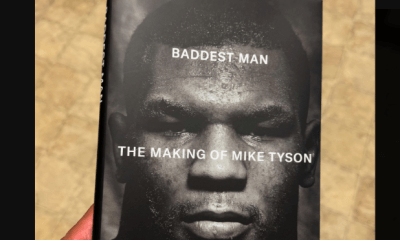
 Book Review4 weeks ago
Book Review4 weeks agoMark Kriegel’s New Book About Mike Tyson is a Must-Read
-

 Featured Articles3 weeks ago
Featured Articles3 weeks agoThe Hauser Report: Debunking Two Myths and Other Notes
-
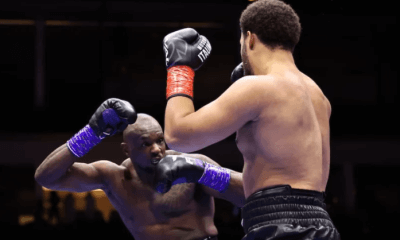
 Featured Articles3 weeks ago
Featured Articles3 weeks agoMoses Itauma Continues his Rapid Rise; Steamrolls Dillian Whyte in Riyadh
-
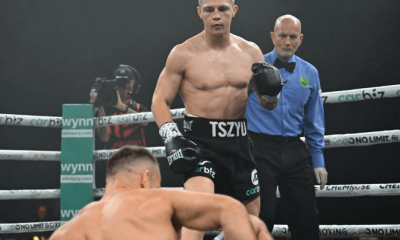
 Featured Articles3 weeks ago
Featured Articles3 weeks agoNikita Tszyu and Australia’s Short-Lived Boxing Renaissance
-
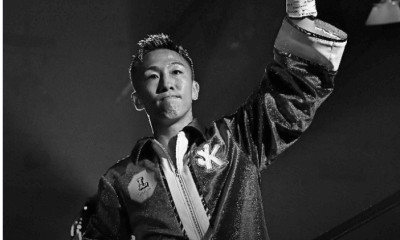
 Featured Articles4 weeks ago
Featured Articles4 weeks agoKotari and Urakawa – Two Fatalities on the Same Card in Japan: Boxing’s Darkest Day
-
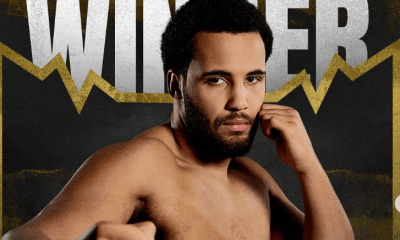
 Featured Articles3 weeks ago
Featured Articles3 weeks agoIs Moses Itauma the Next Mike Tyson?
-

 Featured Articles2 weeks ago
Featured Articles2 weeks agoBoxing Odds and Ends: Paul vs ‘Tank,’ Big Trouble for Marselles Brown and More
-

 Featured Articles2 weeks ago
Featured Articles2 weeks agoAvila Perspective, Chap. 340: MVP in Orlando This Weekend














